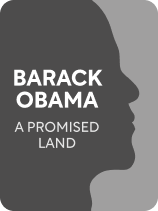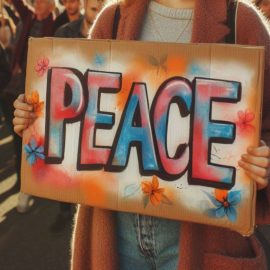

This article is an excerpt from the Shortform book guide to "A Promised Land" by Barack Obama. Shortform has the world's best summaries and analyses of books you should be reading.
Like this article? Sign up for a free trial here .
What was the Arab Spring movement? How did it involve the United States?
The Arab Spring movement was a series of protests and movements in the Middle East. People overthrew governments, protested, and fought for more freedom and liberty.
Read more about the Arab Spring movement and how the U.S. got involved.
Building Global Consensus
Through managing two wars in Afghanistan and Iraq, Barack Obama had learned what all other modern U.S. presidents had learned—that the Middle East was a highly unstable region of the world. With a few exceptions, much of the region was economically underdeveloped, highly dependent on oil exports, and governed by oppressive regimes with poor human rights records. Unfortunately, many of these regimes had also been supported by the United States financially and militarily.
Within this broader context of sectarian strife, political repression, and economic stagnation, the administration worried that populist uprisings were inevitable. The region’s dictators would only be able to keep the lid on the region’s tensions for so long. Eventually, the powder keg would blow—and the consequences could be destabilizing, violent, and even deadly.
Given this situation, foreign policy experts in the administration like National Security Council advisor Samantha Power believed that easing repressive Middle East regimes toward democracy and human rights would be a humanitarian triumph—and, ultimately, be in the long-term security interests of the U.S. and the world.
The Arab Spring Movement
In January 2011, the Middle Eastern powder keg finally exploded. Spontaneous street protests in Tunisia toppled the government in that country, with the unrest spilling over to Algeria, Yemen, Jordan, Oman, and Egypt.
The myopic and long-entrenched leaders of these countries were slow to react to waves of young people taking to the streets, aided in their organizing and communications power by the nascent technology of social media.
In Cairo’s Tahrir Square, young people protested to demand the end of the country’s “emergency law,” which had been in effect since 1981 and had severely curtailed civil liberties and the free press. The demonstrators wanted pro-democracy reforms and for longtime Egyptian president Hosni Mubarak (1928-2020) to step down after 30 years in office.
Although Obama couldn’t help but sympathize with the young demonstrators battling a corrupt and authoritarian political establishment, he had deep concerns about the impact that the movement—which quickly became known as the Arab Spring Movement—would have on U.S. interests in the region.
Analysts in the administration worried that Egypt did not yet have the necessary conditions to make a transition to a healthy democracy: a democratic tradition, experienced and well-established political parties, and an independent judiciary. As a result, the idealistic young demonstrators likely wouldn’t be the ones to step into the political void if Mubarak was ousted. Instead, that vacuum would be filled either by the military or by the Muslim Brotherhood—a Sunni organization that aimed to govern the country according to Sharia law.

———End of Preview———
Like what you just read? Read the rest of the world's best book summary and analysis of Barack Obama's "A Promised Land" at Shortform .
Here's what you'll find in our full A Promised Land summary :
- How Barack Obama went from relative obscurity to the first Black president
- What principles guided his political leadership style
- Why Obama retained an unshakable faith in the potential and promise of America






